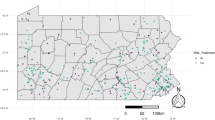Abstract
The decline of the bee population poses threats to the production of considerable types of crops that require pollination. The prediction of the bee’s future population has therefore become a valuable research topic. For Problem one, we tried to solve it in mainly two ways: using the Grey Forecast Model and using differential equations. For data that were missing, we processed them by normalization at first and then regressed to find the abnormal data, and filled the missing data with average data after deleting abnormal data. For the Grey forecast, we use three types of models and compared their respective results with true values to pick the one with the most accurate output and use it to predict the population of bees. For the differential equation method, we simply express the rate of increase in population in terms of several variables (in the differential equation) and solve the equation to obtain the future population. For Problem two, we do a sensitivity test on the bee population. We applied the Random Forest model here to determine the importance of each variable. During the evaluation of the model, we test four sets of data and compare the Random Forest results with the true value. It turned out to be that the final model predicts the population precisely, which has proven that it is reliable. At last, we change the sensitivity of each variable for a 100% change and tell the importance of the variables. For Problem three, we get the model of the possibility of a plant being visited by a bee in a beehive system at any distance, and then we use this matrix to simulate the area and calculate the possibility at any point. After determining a possible lower bound, we can get the area that can reach the bound which is the area the current beehive system can serve. By changing the number and the positions of beehives, we can get the maximum area the system can serve at any time. We can also calculate the possibility considering the planting density and the population of bees so it can be related to problem 1.
Access this chapter
Tax calculation will be finalised at checkout
Purchases are for personal use only
Similar content being viewed by others
References
A., N. (2014). European Red List of Bees. Publication Office of the European Union. https://policycommons.net/artifacts/1374072/european-red-list-of-bees/1988308/
Food and Agriculture Organization of the United Nations. (2019, May 20). News Article: Declining bee populations pose threat to global food security and nutrition. FAO. Retrieved November 5, 2022, from https://www.fao.org/news/story/en/item/1194910/icode/
Morse, R. A., & Calderone, N. W. (2000). The value of honey bees as pollinators of US crops in 2000. Bee culture, 128(3), 1–15.
Collins, A. M., Rinderer, T. E., Harbo, J. R., & Bolten, A. B. (1982). Colony defense by Africanized and European honey bees. Science, 218(4567), 72–74.
Cairns, C. E., Villanueva-Gutiérrez, R., Koptur, S., & Bray, D. B. (2005). Bee Populations, Forest Disturbance, and Africanization in Mexico 1. Biotropica: The Journal of Biology and Conservation, 37(4), 686–692.
Meixner, M. D. (2010). A historical review of managed honey bee populations in Europe and the United States and the factors that may affect them. Journal of invertebrate pathology, 103, S80–S95.
Hatjina, F., Costa, C., Büchler, R., Uzunov, A., Drazic, M., Filipi, J., ... & Kezic, N. (2014). Population dynamics of European honey bee genotypes under different environmental conditions. Journal of Apicultural Research, 53(2), 233–247.
Gezon, Z. J., Wyman, E. S., Ascher, J. S., Inouye, D. W., & Irwin, R. E. (2015). The effect of repeated, lethal sampling on wild bee abundance and diversity. Methods in Ecology and Evolution, 6(9), 1044–1054.
Mallinger, R. E., Gaines-Day, H. R., & Gratton, C. (2017). Do managed bees have negative effects on wild bees?: A systematic review of the literature. PloS one, 12(12), e0189268.
Mallinger, R. E., Gaines-Day, H. R., & Gratton, C. (2017). Do managed bees have negative effects on wild bees?: A systematic review of the literature. PloS one, 12(12), e0189268.
Bryden, J., Gill, R. J., Mitton, R. A., Raine, N. E., & Jansen, V. A. (2013). Chronic sublethal stress causes bee colony failure. Ecology letters, 16(12), 1463–1469.
Rollin, O., Bretagnolle, V., Decourtye, A., Aptel, J., Michel, N., Vaissière, B. E., & Henry, M. (2013). Differences of floral resource use between honey bees and wild bees in an intensive farming system. Agriculture, Ecosystems & Environment, 179, 78–86.
Genersch, E. (2010). Honey bee pathology: current threats to honey bees and beekeeping. Applied microbiology and biotechnology, 87, 87–97.
Chai-Ead, N., Aungkulanon, P., & Luangpaiboon, P. (2011, March). Bees and firefly algorithms for noisy non-linear optimisation problems. In Proceedings of the international multi conference of engineering and computer scientists (Vol. 2).
Berry, J. A., Hood, W. M., Pietravalle, S., & Delaplane, K. S. (2013). Field-level sublethal effects of approved bee hive chemicals on honey bees (Apis mellifera L). PloS one, 8(10), e76536.
Acknowledgments
This work was in part supported by Project of Sanya Yazhou Bay Science and Technology City (Grant No: SCKJ-JYRC-2022-17) and Sanya Science and Education Innovation Park of Wuhan University of Technology (Grant No:2022KF0020).
Author information
Authors and Affiliations
Editor information
Editors and Affiliations
Rights and permissions
Copyright information
© 2024 The Author(s), under exclusive license to Springer Nature Switzerland AG
About this paper
Cite this paper
Jin, Y., Wei, T., Shi, J., Chen, T., Yang, K. (2024). Prediction of Bee Population and Number of Beehives Required for Pollination of a 20-Acre Parcel Crop. In: Meng, L. (eds) International Conference on Cloud Computing and Computer Networks. CCCN 2023. Signals and Communication Technology. Springer, Cham. https://doi.org/10.1007/978-3-031-47100-1_12
Download citation
DOI: https://doi.org/10.1007/978-3-031-47100-1_12
Published:
Publisher Name: Springer, Cham
Print ISBN: 978-3-031-47099-8
Online ISBN: 978-3-031-47100-1
eBook Packages: EngineeringEngineering (R0)




